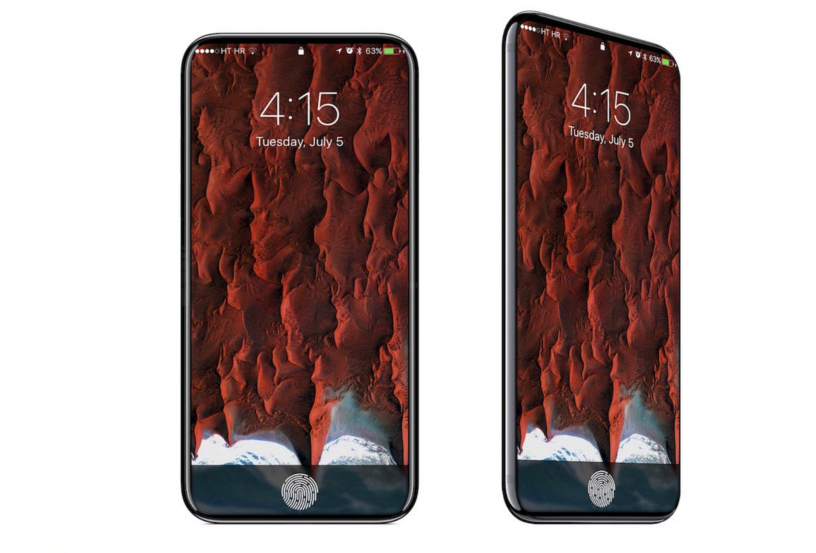 1991
1991
 2017-02-24
2017-02-24
Apple may be gearing up to replace its iconic Touch ID fingerprint sensor with an advanced new form of acoustic bio-recognition hardware — and this technology could even come to market later this year, when Apple unveils its hotly anticipated ‘iPhone X’ flagship. Although we currently don’t know much about the technology, itself, an Apple patent application that was published Thursday by the U.S. Patent and Trademark Office appears to shed some light on what the company might have in store for its edge-to-edge, OLED-equipped iPhone.
Defined by Apple as an “Acoustic Imaging system architecture,” the company outlines the underlying concept of how Touch ID — a paramount security feature of iPhones and iPads for the last several years — could be replaced by a consortium of “acoustic transducers,” which could ultimately be positioned methodically beneath the display glass.
These transducers would, in theory, generate a wave of acoustic pulses, which would be capable of passing through a device’s most superficial layers — such as the display glass of an iPhone, for instance. The relative power of these transducers to pass through glass, or other superficial layers of a device, would supposedly be managed by a peripherally-mounted controller, according to Apple’s official patent filing with the USPTO.

The acoustic sensors, therefore, when they come in contact with a foreign object (such as the human finger), would ultimately result in that input being scanned in the form of electrical signals that would be recognizable by the onboard controller.
According to the patent filing, something like the ridges of a human finger, for instance, would induce an “acoustic impedance mismatch,” which in turn would cause the electrical waves generated by said input to either reflect or diffract the input in a learned manner — such as to unlock the device, or carry out the tasks that Touch ID would have otherwise facilitated.
Much akin to Touch ID, or other biometric security protocols such as iris scanning, the scanned data acquired utilizing this acoustic imaging system would then be compared in relation to a database of “known assets” — in simpler terms, the device’s stored fingerprints — in order to authenticate the user.
Furthermore, this acoustic imagining system is supposedly designed in such a way that it could theoretically be implemented anywhere on the outer chassis of the device. Alternatively, the system could also be placed around the perimeter of the device, along the outer bezels, or even on the back-side of the chassis, altogether — which would render the system capable of recognizing other forms of input, even beyond the human finger, such as a users’ entire handprint, skin patterns, or other body parts.
Source: idropnews